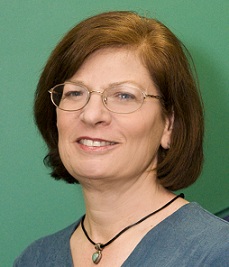Interoperability is the Key, Profitability and Patient Engagement the Result, Part III
 Kathy McCoy, MBA
Kathy McCoy, MBA
Follow her on Twitter @kathymccoy
In our last post Part II, we looked at how a technology-optimized medical office would flow from the practice’s perspective. Some people fear that the greater use of technology will reduce the practice of medicine to an assembly line for patients, so let’s take a look at how the process can look from a patient’s perspective, based on an interview with Rochelle Glassman, founding partner of Phoenix Physician Services and now United Physician Services, LLC, and a nationally recognized healthcare consultant with experience in both the payer and provider arenas.
- Online appointment scheduling – Using a patient portal, the patient will have the convenience to schedule an appointment 24/7. Plus, they will receive an email appointment reminder that allows them to cancel or change the appointment online for additional convenience (plus keeping the provider’s schedule full). Glassman does caution that the practice will need to offer multiple options for some time: “Online options are great for those under 35 and some others who are more tech-savvy,” Glassman says. “But for older patients who are less comfortable with technology, the practice should continue to provide human interaction. Health care is a service industry.”
- Online demographics updates – Either through the patient portal or in the office at a kiosk, the patient will be able to update their demographics and insure that insurance information is up to date. No more worrying about forgetting to bring the new patient packet to the appointment with them or struggling to complete the lengthy forms in a rush before the appointment.
- Appointment recordings – Glassman pointed out that new technology enables recording of an entire medical appointment, which can then be downloaded to the patient’s smart phone. When receiving important treatment instructions, this can insure that the patient has all the information they need. “Patients only recall about 35% of what they hear in an appointment,” says Glassman. “With this technology, they have the option to go home and listen to the instructions in a less stressful environment.”
- In-office prescriptions – As mentioned in the first part of this post, Glassman recommends that practices fill prescriptions for the top 15 most common medications prescribed in the practice. From a patient perspective, being able to pick up prescriptions in the doctor’s office offers multiple benefits, from saving time and gas to avoiding unnecessary additional exposure to contagions.
- Online lab results – Using their patient portal, patients can see lab results and understand what they mean, without waiting for the next appointment. This can reduce anxiety, increase patient engagement in treatment, and improve patient satisfaction.
- In-home care – Glassman points out that, in a return to “house calls,” there are medical treatments—and even surgical treatments—that can be done in the home. With the use of current technology, patients can have small toe amputations done in the home—a great convenience for diabetic patients, and payers are not paying for unnecessary facility fees.
- Payment processes – In addition to being easier and more cost-effective for the practice, improved financial processes benefit the patients as well. With increased patient responsibility, patients are more concerned with what appointments will cost. In what other industry does a customer get service without having any idea what it will cost him or her? With online checking of benefits and a current fee schedule uploaded, the medical office can inform patients before the appointment what their costs will be, reducing anxiety and improving patient satisfaction.
As Glassman points out, it’s important for medical offices to offer multiple options to patients for those who are not comfortable with technology. But for many—and I’ll confess to being one of them—the benefits of technology will only enhance the patient experience.
The Brave New World of Healthcare IT Post Series
Kathy McCoy, MBA, has written on practice management and revenue cycle management for more than 5 years for leading medical software, medical marketing and medical billing companies. She has more than 17 years of experience in continuing medical education, developing programs with respected educational institutions including Columbia University, Johns Hopkins, and Cleveland Clinic. Contact Kathy at contentperformance@gmail.com.
